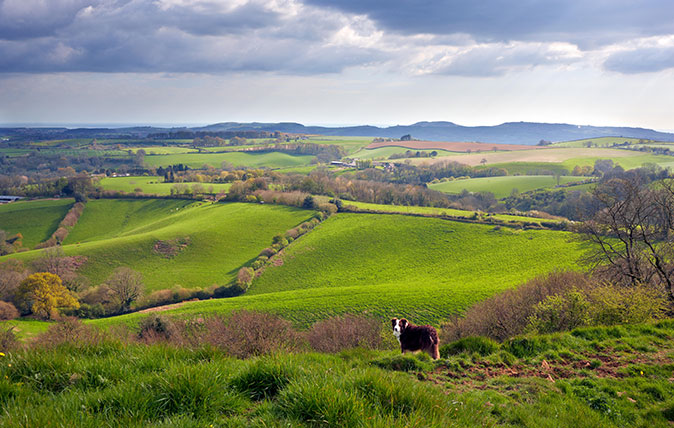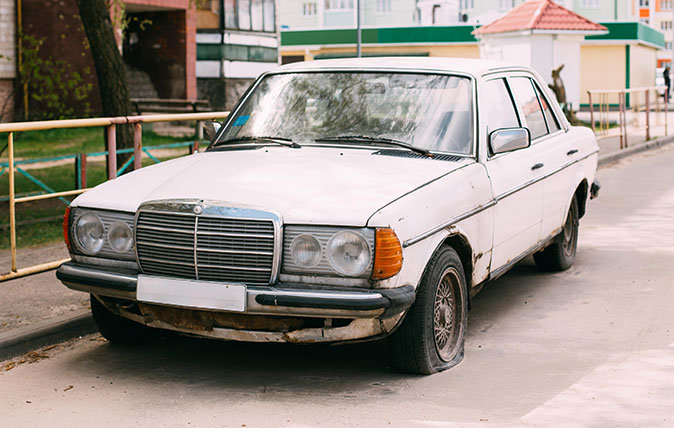Jason Goodwin: ‘The boys excavated a rusty buckle and I carelessly tossed it over my shoulder – later, we found its identical twin, labelled Roman, in the museum’
Our columnist pays tribute to his late neighbour Dudley Tolley, a farmer who embodied the image of the lovable English eccentric.

By no means the most extraordinary thing about our neighbour Dudley Tolley were his huge, flat ears. Like most of the old farmers, he wore his jerseys tucked into his trousers and his trousers tucked into his gumboots and if you met him on the hill, he might stop and speak to you with sweet gravity about the things he saw and thought about.
The Dorset hill that belonged to him is Waddon Hill, with the grazing around it and the track that leads up from Beaminster, along which the Roman general Vespasian marched his legions against the Durotriges.
Above it rises the wooded mass of Lewesdon Hill, which gave sailors their bearings out at sea. Waddon was a native hill-fort, but the Romans established a base there; it was later used for quarrying and we found many ammonites in the stones.
Waddon Hill was a source of infinite interest. Once, the boys excavated a rusty buckle and I carelessly tossed it over my shoulder – later, we found its identical twin, labelled Roman, in the museum. One summer, our puppy chased a kite around the hill for hours, barking in fury; sometimes in winter, in deep drifts of snow, we looked out from the hill’s moulded top over a black-and-white county, copse, hedgerow, field and isolated farms etched against the polished-steel plate of the sea.
"At the back of the farm, there still stood Dorset’s answer to the Great Mosque at Córdoba, a vast enclosure Tolley had built up from telegraph poles and sheets of corrugated iron in different stages of rust"
We moved, not very far, but these hills muffle news like sound and I didn’t know Tolley had died until I saw the estate agent’s board by the road, a square of bright-edged plastic against the muted stones and crevices of Knapp Farm.
In Tolley’s time, a weak light glowing from the kitchen ceiling signalled his presence, like the Royal Standard, but now the mullioned window was dark. The yard looked much the same, a few mud tracks and grass growing through discarded ironwork. The history of tractor power – a silent Fergie, a self-starting Fordson, a rusty Case – had gone from the cart shed. I suppose his heirs thought that wise.
A clanking and creaking in the wind told us that, at the back of the farm, there still stood Dorset’s answer to the Great Mosque at Córdoba, a vast enclosure Tolley had built up from telegraph poles and sheets of corrugated iron in different stages of rust. It was about 70ft wide and 150ft long, its roof supported by a Moorish forest of slender poles and tied down with all manner of string and cable.
Sign up for the Country Life Newsletter
Exquisite houses, the beauty of Nature, and how to get the most from your life, straight to your inbox.
Tolley lived alone, farmed alone and read by the light of a 40-watt bulb. He kept a very open mind. There were things he’d seen on Waddon Hill – lights and sounds where sounds and lights shouldn’t be – that city people would have trouble bringing into their urban way of thinking.
And on Lewesdon one morning, as he told the local paper, he saw a wolf. He knew what people might say, but he thought he knew the difference between a wolf and a dog. ‘It was a beautiful animal in very good condition. I have never seen a wolf in the wild before.’
The Domesday Book records some nearby land that the Conqueror assigned to William de Warenne, 1st Earl of Surrey, ‘formerly held by TOLI’.
You can no more bend Dudley Tolley’s rules of the land than you can scrub him from history, as with Kipling’s Hobden or Edward Thomas’s Lob: ‘He sounds like one I saw when I was a child…/He is as English as this gate, these flowers, this mire.’

Credit: Alamy
Jason Goodwin: ‘He was lying and I knew it, but his lies were so egregious I couldn’t quite bear to call him out’

Perfect pilaf rice made simple: A skill that every cook should learn for life
Writer, historian and chef Jason Goodwin whips up perfect pilaf rice.
-
 Designer's Room: A solid oak French kitchen that's been cleverly engineered to last
Designer's Room: A solid oak French kitchen that's been cleverly engineered to lastKitchen and joinery specialist Artichoke had several clever tricks to deal with the fact that natural wood expands and contracts.
By Amelia Thorpe
-
 Chocolate eggs, bunnies and the Resurrection: Country Life Quiz of the Day, April 18, 2025
Chocolate eggs, bunnies and the Resurrection: Country Life Quiz of the Day, April 18, 2025Friday's quiz is an Easter special.
By James Fisher